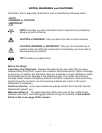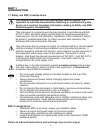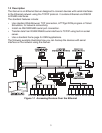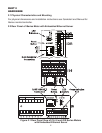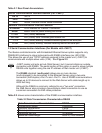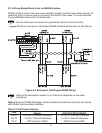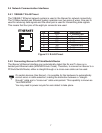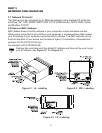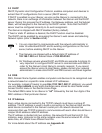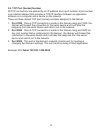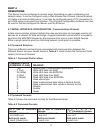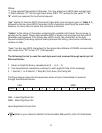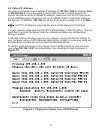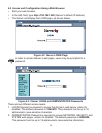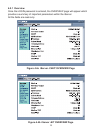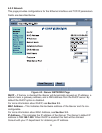
3.3 DHCP
DHCP, Dynamic Host Configuration Protocol, enables computers and devices to
extract their IP configurations from a server (DHCP server).
If DHCP is enabled on your iServer, as soon as the iServer is connected to the
network, there is an exchange of information between the iServer and the DHCP
server. During this process the IP address, the Gateway address, and the Subnet
Mask, will be assigned to the iServer by the DHCP server. Note that the DHCP
server must be configured correctly to do such assignment.
The iServer is shipped with DHCP disabled (factory default).
If fixed or static IP address is desired, the DHCP function must be disabled.
The DHCP can be enabled by accessing the iServer’s web server and selecting
Network option (refer to Section 4.5.2).
1. It is very important to communicate with the network administrator in
order to understand DHCP and its existing configurations on the host
server, before enabling DHCP on the iServer.
2. The iServers are shipped with a default static IP address of
192.168.1.200 and Subnet Mask of 255.255.255.0.
3. On Windows servers where DHCP and DNS are separate functions it’s
very important to configure DHCP server to communicate with DNS in
order for the iServer’s Host Name to correctly respond. If you cannot
access the iServer using its Host Name, please contact your network
administrator to make sure DHCP and DNS servers are linked together.
3.4 DNS
DNS, Domain Name System enables computers and devices to be recognized over
a network based on a specific name instead of IP addresses.
For example, instead of having to use http://192.168.1.200 (IP address), you would
use only http://eit0a0b or any eight character name stored as Host Name under
Access Control menu in the iServer Home Page.
The default DNS name for an iServer is "eit" followed by the last four digits of the
MAC address of that particular iServer.
3.5 IP Address
Every active device connected to the TCP/IP network must have a unique IP
address. This IP address is used to build a connection to the iServer itself and the
serial device connected to the iServer’s serial port. All network devices like
computers that use TCP/IP protocol to communicate with each other should have a
unique 32-bit address called IP address.
The IP address is divided into two portions, the network ID and the host ID. For
instance, every computer on the same network uses the same network ID. At the
same time, all of them have different host IDs.
For more details about the IP address see Appendix B.
9



